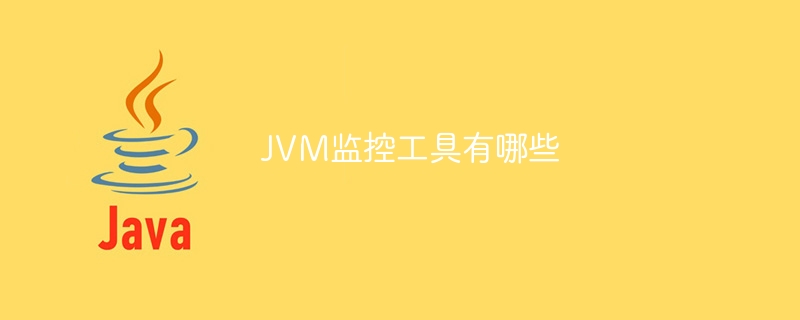Home >Java >javaTutorial >What are the JVM monitoring tools?
What are the JVM monitoring tools?
- 百草Original
- 2024-01-10 14:02:001613browse
JVM monitoring tools include: 1. JConsole; 2. VisualVM; 3. JProfiler/JRockit; 4. GCViewer; 5. YourKit; 6. MAT; 7. Hawtio. Detailed introduction: 1. JConsole is a simple graphical tool for monitoring and managing Java applications. It can connect to running Java processes and provide real-time views of various performance indicators; 2. VisualVM is a Powerful and more.

The operating system for this tutorial: Windows 10 system, DELL G3 computer.
JVM monitoring tools are tools used to monitor, diagnose, and tune Java Virtual Machine (JVM) performance. These tools can help developers and operation and maintenance personnel understand the running status of the JVM, identify and solve performance problems, and improve the stability and efficiency of applications. The following are some common JVM monitoring tools:
1. JConsole: JConsole is a simple graphical tool for monitoring and managing Java applications. It can connect to running Java processes and provide real-time views of various performance indicators such as memory usage, thread activity, class loading, etc. JConsole also supports remote connections and can monitor Java applications on remote servers.
2. VisualVM: VisualVM is a powerful all-in-one monitoring tool that provides an integrated interface to monitor, analyze and debug Java applications. It supports connecting to local and remote JVMs, and provides rich performance indicators and diagnostic tools, such as CPU profiler, memory snapshot profiler, thread dump generator, etc.
3. JProfiler/JRockit: JProfiler and JRockit are two professional performance analysis and diagnostic tools suitable for large enterprise-level Java applications. They provide detailed JVM performance analysis capabilities, including memory management, CPU usage, thread and lock analysis, etc. These tools also provide powerful visual interfaces, making the analysis and diagnosis process more intuitive and convenient.
4. GCViewer: GCViewer is an open source tool for monitoring and analyzing Java garbage collection (GC) logs. It can parse and visualize GC log files to help developers understand the JVM's garbage collection behavior and performance issues. GCViewer provides a variety of views and charts, such as garbage collection timeline, heap memory usage, etc., making the analysis process more convenient.
5. YourKit: YourKit is a commercial performance analysis tool suitable for Java applications of all sizes. It provides comprehensive performance analysis capabilities, including memory management, CPU usage, thread and lock analysis, etc. YourKit also supports multiple JVM platforms and operating systems, and provides an easy-to-use visual interface to make the analysis and diagnosis process more efficient.
6. MAT (Memory Analyzer Tool): MAT is a tool for analyzing Java heap dumps. It helps developers identify problems with memory leaks and invalid memory usage. MAT can open .hprof files (Java heap dump files) and provides a series of powerful analysis functions, such as memory leak detector, object size analyzer, etc.
7. Hawtio: Hawtio is a web-based monitoring and management platform suitable for Java applications running on Apache Mesos, Marathon, Kubernetes and other platforms. It provides an extensible dashboard that can integrate various monitoring and diagnostic plug-ins, such as JVM metrics, application logs, custom metrics, etc. Hawtio also supports remote connections and multi-tenant modes, making it easy to manage and monitor Java applications in distributed systems.
These tools each have their own characteristics and advantages, and choosing the right tool depends on the needs and scale of the project. Developers and operation and maintenance personnel can choose one or more tools to monitor, analyze and tune JVM performance according to actual conditions to improve application performance and stability.
The above is the detailed content of What are the JVM monitoring tools?. For more information, please follow other related articles on the PHP Chinese website!

